Analysis by Keith Rankin.
The countries shown here have rates of Covid19 mortality comparable with each other, and – with one exception – have recent ‘excess deaths’ data.
We should note that the World Health Organisation (WHO) has just released its world Covid19 mortality estimates for the pandemic so far, suggesting a death toll ‘from’ Covid19 – ie a toll that includes mortality arising from the policy-mandated shutdowns and other measures – which is two-and-a-half times higher than the ‘official’ toll of verified deaths ‘of’ or ‘with’ Covid19. (Refer WHO puts global COVID-19 death toll at nearly 15 million, Al Jazeera, 5 May 2022.)
Netherlands
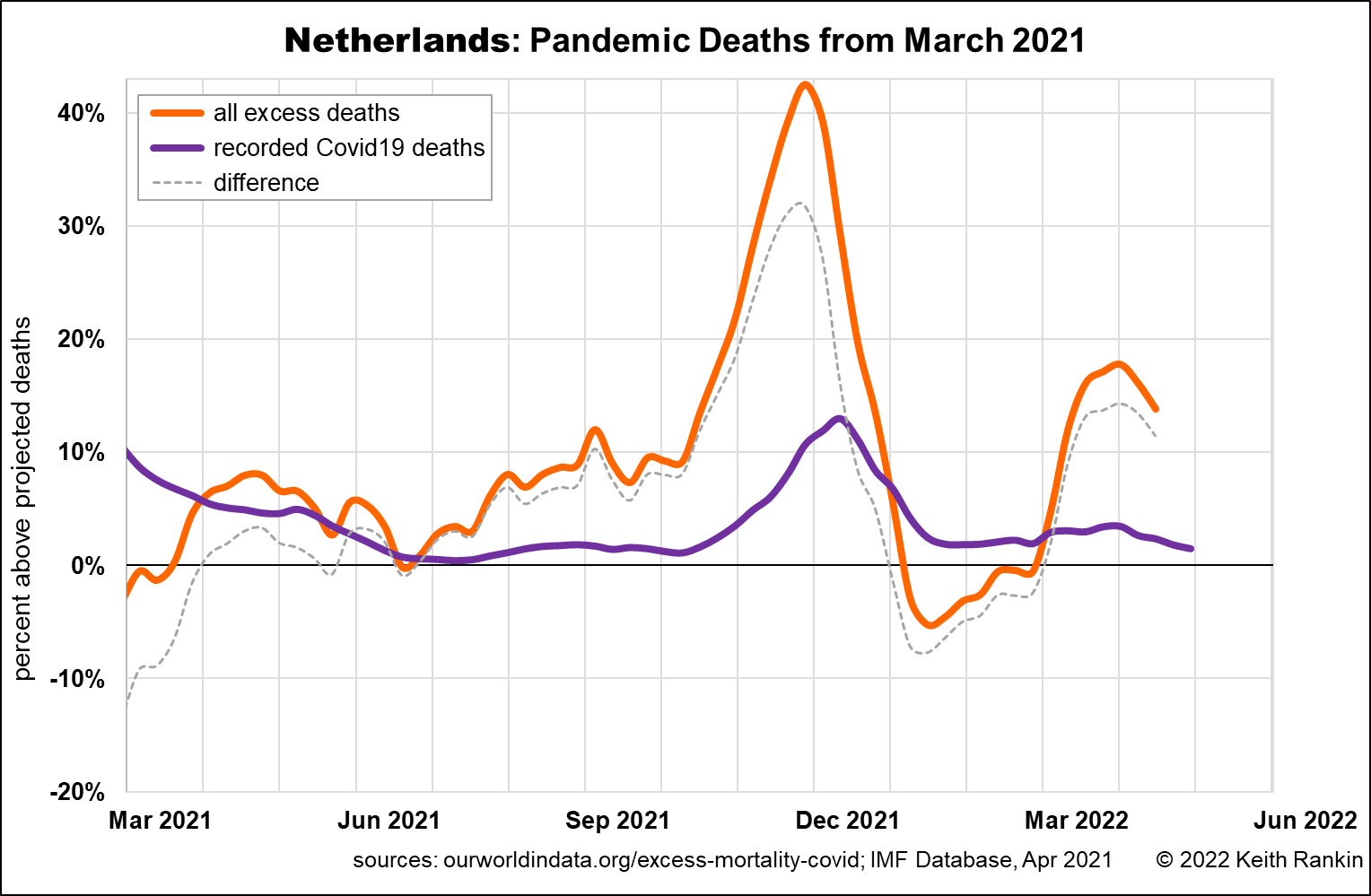
It’s common for European countries to have excess death rates at about 10 percent in 2021, while having few recorded Covid19 deaths; this is especially the third quarter of that year. And then, when a substantial wave of Covid19 hit that country, the official Covid19 statistics were slow to reflect that wave. Netherlands is an excellent example of this phenomenon.
From the outset, Netherlands was one of the more reluctant countries to properly document the pandemic. Though, unlike many other countries, it does keep timely overall death registration data. In the last month or so, Netherlands has had surprisingly high excess deaths (close to 20 percent of all deaths); comparable to excess deaths in New Zealand in the present ‘omicron’ wave of the pandemic.
The ‘difference’ plot shows two things: mainly uncounted covid deaths when the difference between the two measures of covid deaths is high and positive; and mainly the impact of public health measures (which save some deaths and postpone others) when the difference is negative. In the 2022 omicron-era, substantially negative ‘difference’ data reflects the extent which people have died ‘with’ Covid19 but not ‘of’ Covid19.
An important feature of the European covid demographics is the rapid decline in deaths at the end of 2021. While this will have been partly due to public health measures, it was probably most due to omicron-covid prevailing over its rival delta-covid, in the battle-to-the death between the variants. (To understand these viruses properly, we should see them as the mortal rivals of each other; humans and other hosts are merely collateral damage. Omicron was nature’s solution to Delta.)
Belgium
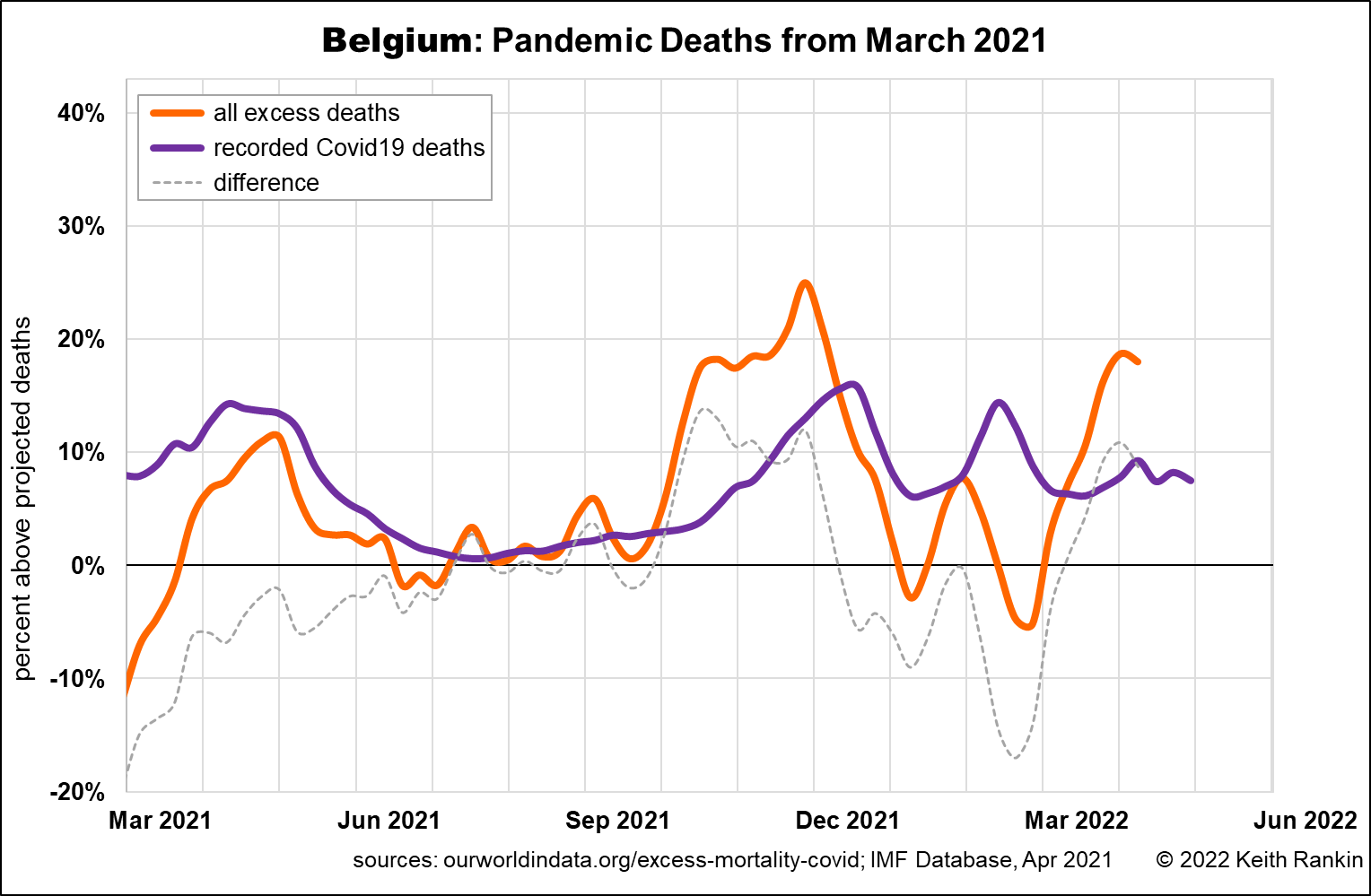
In Belgium the undercount of Covid19 deaths is markedly lower than the Netherlands, and the undercount period is shorter. Like Netherlands, Belgium has also had New Zealand levels (just under 20%) of excess deaths in late March.
Germany
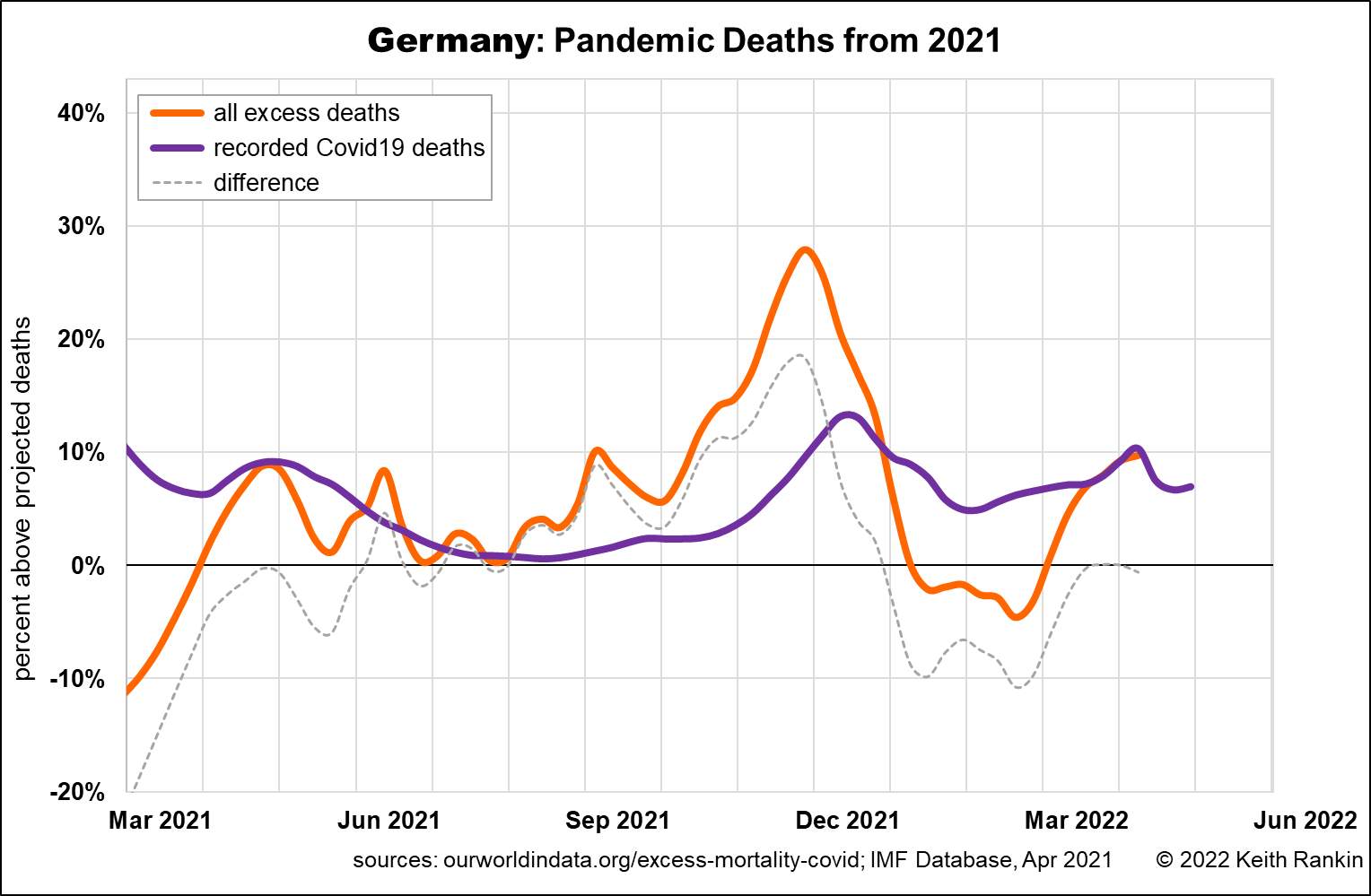
German death data is a mix of Netherlands’ and Belgium’s. Germany has a smaller ‘delta peak’ than Netherlands, and, in the last month or so, lower excess mortality than both of the low countries.
Denmark
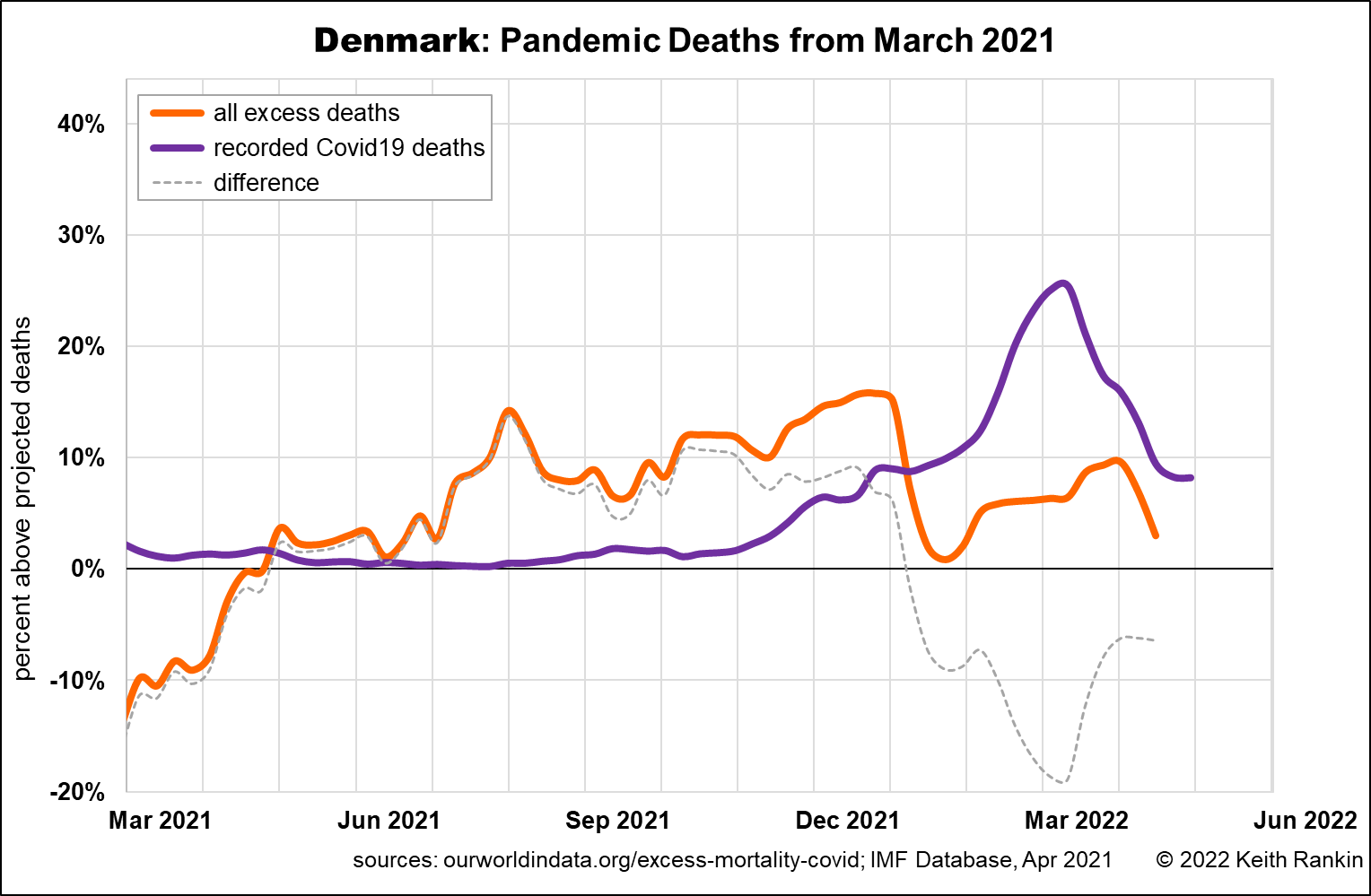
Again, there is the long covid-mortality undercount during 2021; and a dramatic mortality decline as omicron ‘kicked delta’s arse’. Mortality in the omicron-wave is low, but present; while Denmark had a huge case-count in the omicron wave, its excess mortality was very low.
Sweden

Sweden, despite large numbers of recent cases (despite much lower covid-testing rates than Denmark), shows the lowest European death rates over the Northern Hemisphere winter. No sign yet of the recent uptick in excess deaths which is apparent elsewhere. Sweden would appear to have maintained high levels of general immunity to epidemic viruses.
Israel

Israel is the only one of the countries, shown here, to have a very high peak death rate in the omicron-era. Yet Israel missed the late 2021 ‘delta-wave’, so it would seem that these deaths early in 2022 will have been mainly due to a late delta-wave that ended quickly (in early February) when omicron ate delta.
Israel’s recorded covid deaths have been more comprehensive than those in most European countries. Nevertheless, in both of its major death waves, the official data clearly lags the actual data.
South Korea
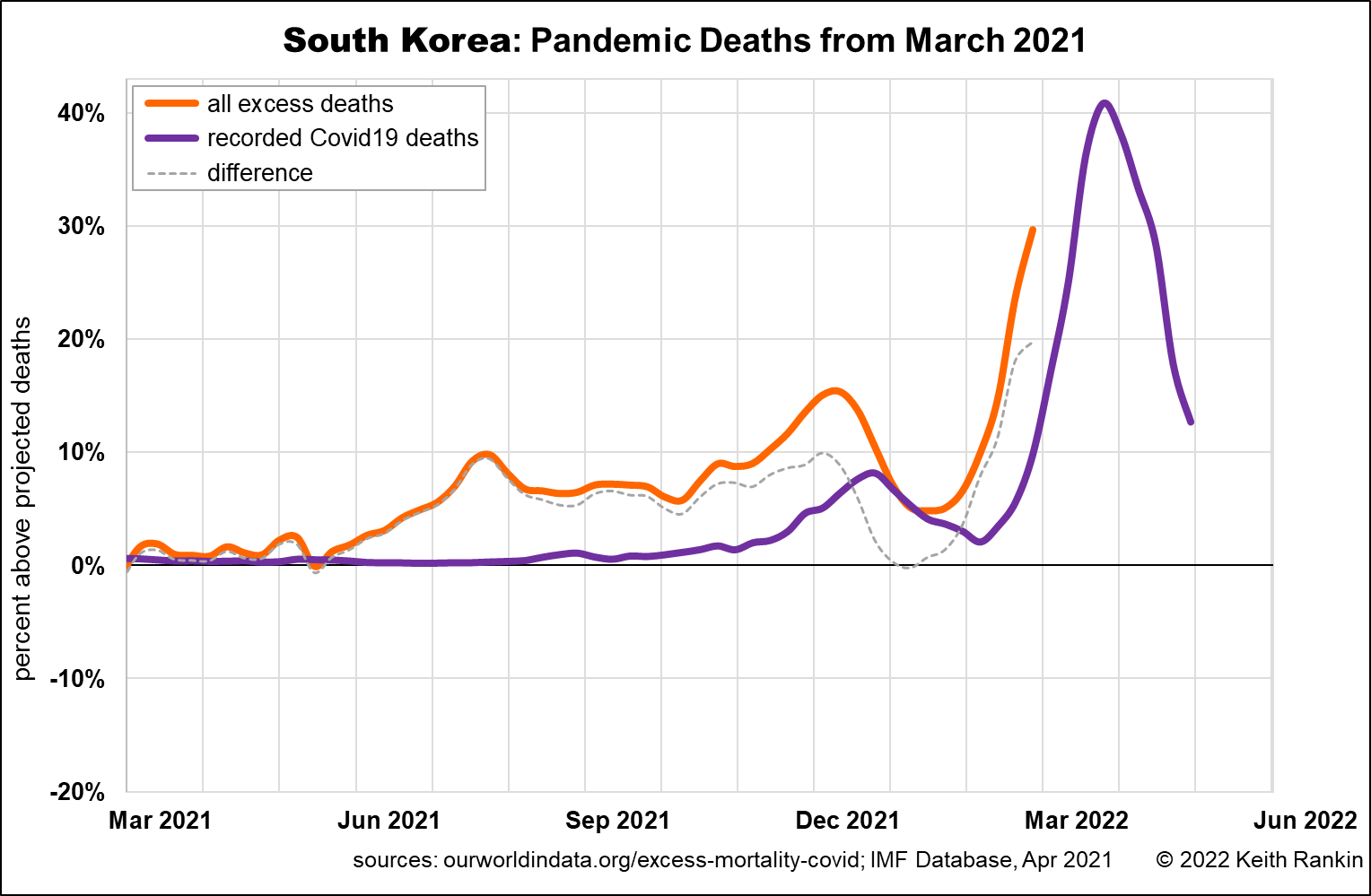
South Korea, an advance Asian country with early experience of Covid19 in March 2020, and experience of SARS in 2003, shows the same problems in recording covid deaths – in the 2021 delta period – that occurred in Netherlands and Denmark (among others in Europe).
Then after that, unlike Europe, South Korea suffered hugely during the omicron wave. The most likely reason is that public health measures taken in Korea left Koreans with a substantial overall immunity shortfall; Koreans appear to have become more naïve to this virus than have European, African and American populations.
Thailand

Finally, Thailand is one of the few Asian countries with comprehensive and timely mortality data. Thailand copped two delta waves of covid mortality in 2021. Again, like South Korea, it shows significant signs of having a particularly vulnerable population; quite different from, for example, Sweden. Looking at the Thai data, we may conclude that South Korea managed to keep covid in check in the second half of 2021, only to succumb to the inevitable in 2022.
Thailand is also showing a recent upsurge of mortality in the omicron-wave of Covid19. Its specifically covid immunity should be quite high. Yet the people in Thailand (or, maybe, Asia in general) seem to be significantly more vulnerable than people elsewhere. My guess is that there is a lack of general immunity in Thailand, and that excessive public health policy measures may be in part responsible for that vulnerability.
*******
Keith Rankin (keith at rankin dot nz), trained as an economic historian, is a retired lecturer in Economics and Statistics. He lives in Auckland, New Zealand.








